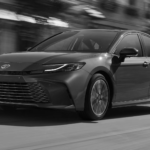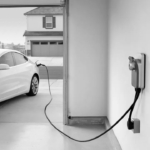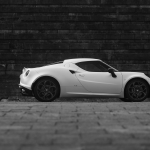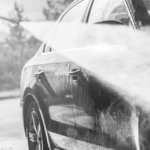The age of million-dollar engines is over, and it’s high time to come to terms with this. However, there are still many engines in service that continue to churn out the next hundred thousand without any problems.
Criteria For a Reliable Engine
Strictly speaking, the reliability of any power unit is determined at the factory. Each model launched into series has an estimated service life before overhaul. Sometimes it is openly indicated in the repair manual, sometimes it modestly appears only in internal technical bulletins for service stations. It should be understood that the figure indicated on paper is very arbitrary and depends on dozens of factors that are often difficult to predict.
We will not deny that the built-in service life of old engines is indeed noticeably (sometimes several times) higher than modern ones. However, the interpretation of symptoms and a sober assessment of the condition of the unit play a huge role. Which, in most situations, is carried out by the owner not objectively, but solely in order to prove to the neighbor that his “credit cart” cannot be compared with the “real quality of those years.” But let’s say a few words about this at the end. In general, when discussing the criteria for a reliable motor, the following introductory points should be taken into account.
Engine displacement. The higher it is, the lower the average load on the parts of the crank mechanism.
Presence of turbocharging. It is an axiom that turbo engines are on average more loaded (hence, less resource-efficient).
Manufacturing materials. Classic cast iron is less susceptible to thermal and fatigue deformation than modern light aluminum alloys.
General design. The basic principle of mechanics applies here: the fewer parts, the higher the mean time between failures. Elements such as phase shifters, a complex direct injection system, a turbocharger, variable intake length and an abundance of sensors (all of the above are common attributes of modern power units) obviously reduce the life of the engine, even in theory.
Car Pickers Have Compiled a Black List of Engines That Cannot Be Purchased
The following are some relatively modern engines, which, although they did not gain the fame of the millionaires of the 70-80s, have also proven themselves very well in operation. Often not having an astronomical mileage, these engines, however, often have a more or less modern arsenal of technical solutions (although not all). This allows you not so much to brag about the numbers on the odometer, but rather to have good fuel efficiency, adequate throttle response and not dazzle others with the sight and smell of exhaust.
The Most Reliable Diesel Engines: TOP-3
1. Mercedes 3.0 CDI (OM642)
Volume (l.) and cylinder block architecture: 3.0 V6
Power, hp: 184-265
Years of production: 2005-2014
The V-shaped six with an aluminum block and pistons has a Common Rail injection system and an EGR exhaust gas recirculation cooler. A notable feature of the OM642 is the self-cleaning of the particulate filter using the control unit’s own means. This saves the owner from the need to periodically add urea, as in some particularly advanced diesel engines. OM642 is the most modern engine in today’s selection, and certainly not the notorious million-dollar engine from a bygone era. And yet, judging by the statistics and reviews, the remnants of the “former luxury” of the legendary reliability of old Mercedes diesel engines are present in it.
2. VW 1.9 TDI (AFN, 1Z, AAZ, AHU)
Volume (l.) and cylinder block architecture: 1.9 R4
Power, hp: 75-110
Years of production: 1991-2010
The only weak point in the general operating practice of this engine is the timing belt. It is recommended to change it every 60 thousand km, and the owner’s forgetfulness often leads to the most dire consequences. In general, this engine is structurally simple, not overloaded, and, as a result, very unpretentious. The power supply system is based on a distribution injection pump and mechanical injectors, which also gives the advantage of not too high selectivity in fuel quality.
3. BMW 2.5d / 3.0d (M57)
BMW 2.5d / 3.0d (M57) (Photo: BMW)
Volume (l.) and cylinder block architecture: 2.5-3.0 R6
Power, hp: 163-286
Years of production: 1998-2013
The Bavarian “em fifty-seventh” is a seven-time winner of various “Engine of the Year” awards. During the production period it had two modifications: 2.5 and 3 liters. Rooted in older engines, the M57, however, by the end of its life cycle acquired all the modern attributes: variable turbine geometry, phase shifters, Common Rail injection and EGR. A very remarkable feature of the unit is the timing chain drive, which is formally designed for the entire service life of the motor.
If you’re feeling lucky and want to take a break from discussing engines, why not check out some exciting casino games on https://news.22bet.com/? After all, reliable engines and a bit of fun go hand in hand!
The Most Reliable Gasoline Engines: TOP-3
1. Toyota 2.5 / 3.0 (1JZ-GE / 2JZ-GE)
Toyota 2.5 / 3.0 (1JZ-GE / 2JZ-GE) (Photo: izap24.ru)
Volume (l.) and cylinder block architecture: 2.5-3.0 R6
Power, hp: 180-280
Years of production: 1990-2007
Only the owner, who is very detached from the car theme, has not heard of Toyota’s JZ. The line of in-line sixes, produced for 17 years, is among the permanent top of those same million-dollar engines. With a very good specific power of even the very first naturally aspirated versions (180 hp), these units had an excellent service life, the echoes of which allow them to still be in service. And turbocharged versions with an increased volume of 3 liters with minimal tuning made it possible to produce 350-400 horsepower without critical damage to the resource.
2. Renault 1.4-1.6 (K7J/K7M)
Volume (l.) and cylinder block architecture: 1.4-1.6 R4
Power, hp: 75-98
Years of manufacture: 1995-present
One of the longest-living production lines and, at the same time, the permanent leader in reliability among “people’s” engines. The simplest design dates back to the ancient developments of Renault from the middle of the last century. The absence of even minimal modern “chips” except, perhaps, fuel injection (there are not even hydraulic compensators) determines absolute unpretentiousness and a huge resource. The downside is the need to constantly monitor valve clearances, change the timing belt every 60 thousand and get used to the “unbearable” high fuel consumption.
3. SAAB 2.0 (B204)
SAAB 2.0 (B204) (Photo: archiwum.allegro.pl)
Volume (l.) and cylinder block architecture: 2.0 R4
Power, hp: 130-205
Years of production: 1994 – 2001
Not every car enthusiast today knows the small Swedish brand SAAB. That in the 80-90s did not prevent it from successfully competing with such monsters as Mercedes, BMW, Audi and Volvo. The line of two-liter naturally aspirated and turbocharged engines of the B204 series easily exceeds the half-million-kilometer mark, has a huge margin of safety and still enjoys a certain interest from tuners and swappers. At the same time, the engine is very simple in design, unpretentious in operation and extremely durable.
Why There Will Always Be Disputes About the Reliability of Old Engines
The reason for the fierce battles on the Internet regarding “eternal” motors has two roots: the extreme vagueness of evaluation criteria and often a complete reluctance to admit the true reasons for owning an old car. Firstly, the overwhelming majority of apologists of the old school, assuring their opponents of the “eternity” of their engine, rely only on the fact that during the entire run they never had the chance to do a major overhaul. At the same time, they modestly keep silent about such “little things” as weekly oil top-up, annual replacement of carbon-accumulated spark plugs and 15 liters of gasoline consumption on the highway. However, from the point of view of a formal exchange of arguments, did you not understand the motor? I didn’t understand! And since the car still somehow moves, it means that the motor is extremely reliable. Although in fact, if you take measurements of all the tolerances and standards provided by the factory, such an engine is already about 15 years old, it’s time to send it either for a complete overhaul or for scrap.
The second point concerns the true reasons for owning old cars, which are almost always justified by the categorical reliability of old engines. But no matter how much the owners of ancient cars argue in public, the issue of replacing the “eternal old” with the “disposable modern” in 99% of cases lies solely in the financial plane. As soon as a fan of everything reliable gets the opportunity to exchange a 25-year-old model with an “indestructible engine” for a “plastic cart from marketers,” he does it with pleasure. And often he immediately begins to convince everyone that the modern Chinese he switched to is now a standard car. The same as his ancient Japanese from the end of the last century was just a week ago.





